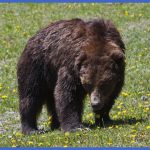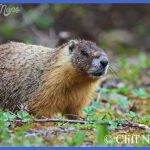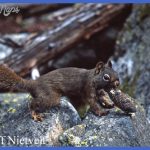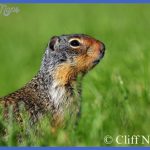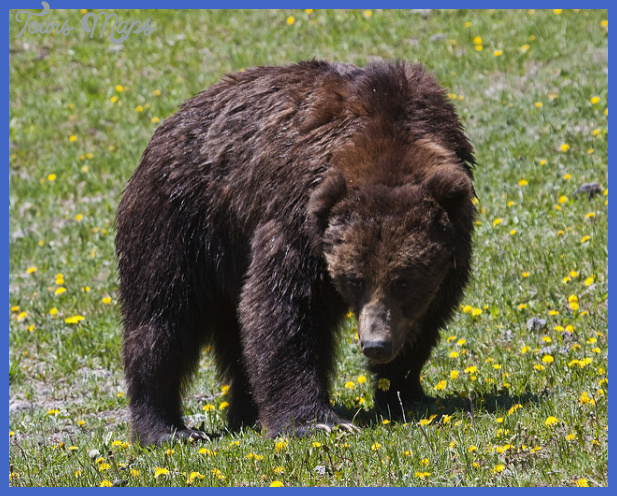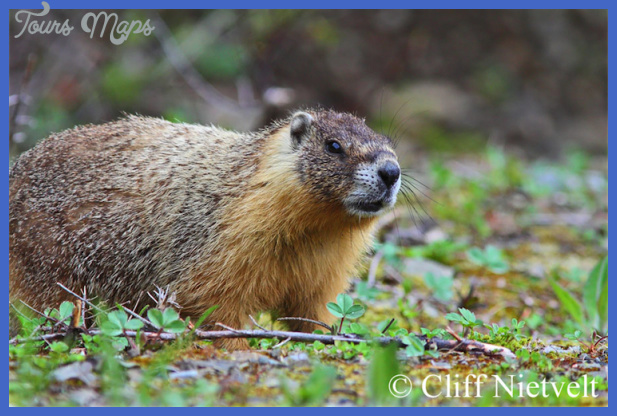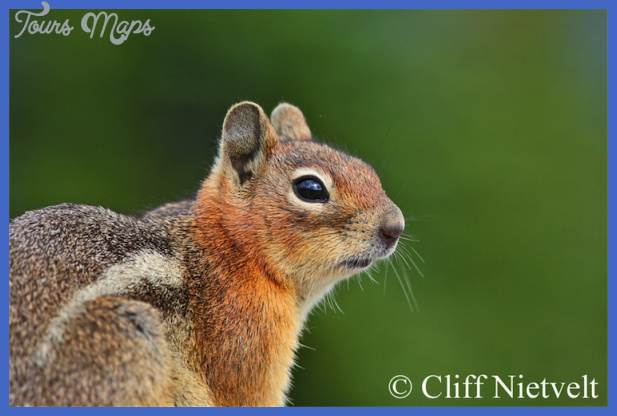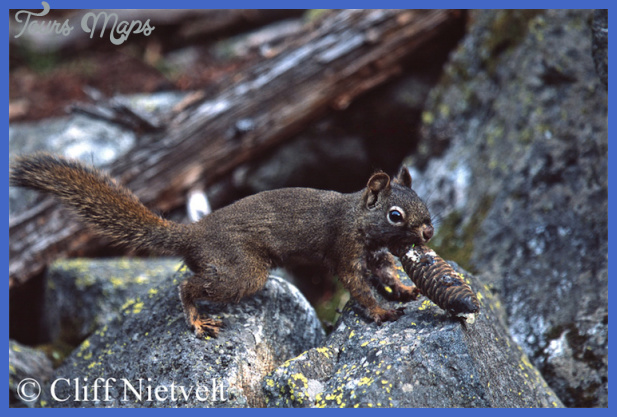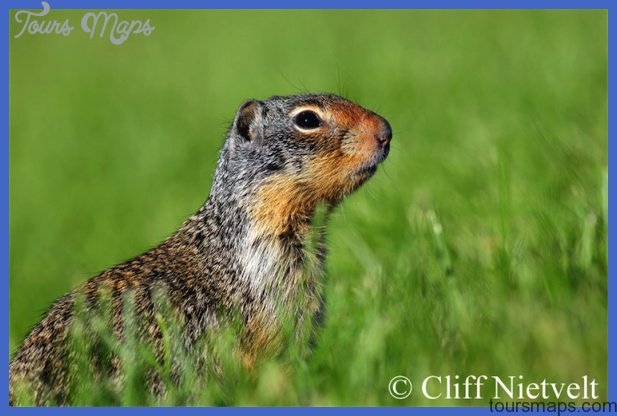The pronghorn antelope (Antilocapra americana) is the smallest but by far the fleetest horned animal in Yellowstone. There’s no point in chasing one. It can sprint up to 60 or 70 miles per hour (about 100 km/hr) and cruise at 30 to 40 mph (50-60 km/hr). In the world of animals, it’s second only to the cheetah in sprinting speed and may be faster over longer distances. It’s a very shy animal and will run at the slightest provocation. The park herd lives between Mammoth Hot Springs and Cinnabar Mountain northwest of Gardiner. Only about 200 have been counted in recent years, and the gradually diminishing herd poses a particularly dicult dilemma for the National Park Service. Since current wildlife management policy favors letting natural processes run their course, should the pronghorn be allowed to die out, with the possibility of having to face a costly reintroduction program in the future? Or should measures be taken to prevent this? Three members of the Cani-dae or dog family live in Yellowstone. By far the most numerous is the coyote (Canis latrans), whose population burgeoned over the many years when there were no competing wolves here. Look for a slim and crafty-looking animal with pointed nose and ears, weighing about 30 pounds (14 kg).
It runs with its long, bushy, black-tipped tail between its legs. Coyotes are abundant enough in the northern valleys that you’re almost sure to see one there, but they live throughout the park. Since wolves were reintroduced to the area, they have killed enough coyotes to reduce the population considerably. Coyotes eat mostly small rodents, stalking and pouncing on their prey, but can bring down a deer or elk when they hunt as a small pack, so the wolves must consider them competition. Should you pronounce the coyote’s name KI-yoat or ki-O-tee? Both are in the dictionaries how you say it seems to depend upon how close you are to Spanish-speaking Mexico, where the name came from. Most residents of Wyoming and Montana say KI-yoat. The smallest dog-like animal in Yellowstone is the red fox (Vulpes vulpes), which weighs about 15 pounds (7 kg). Some red foxes have white-tipped black hairs, giving them a silvery appearance. A mature gray wolf (Canis lupus irremotus), also called a timber wolf, is likely to weigh two or three times as much as a coyote. It has a more massive body and a less pointed snout and ears. A wolf’s tracks are the size of a large dog’s, and its color may be anywhere from nearly white to black. You may see wolves along the Northeast Entrance Road, particularly early and late in the day. Several turnouts are provided for the many enthusiastic wolf watchers.
Yellowstone Larger mammals Photo Gallery
Maybe You Like Them Too
- The Best Cities To Visit in The World
- World’s 10 Best Places To Visit
- Coolest Countries in the World to Visit
- Travel to Santorini, Greece
- Map of Barbados – Holiday in Barbados

